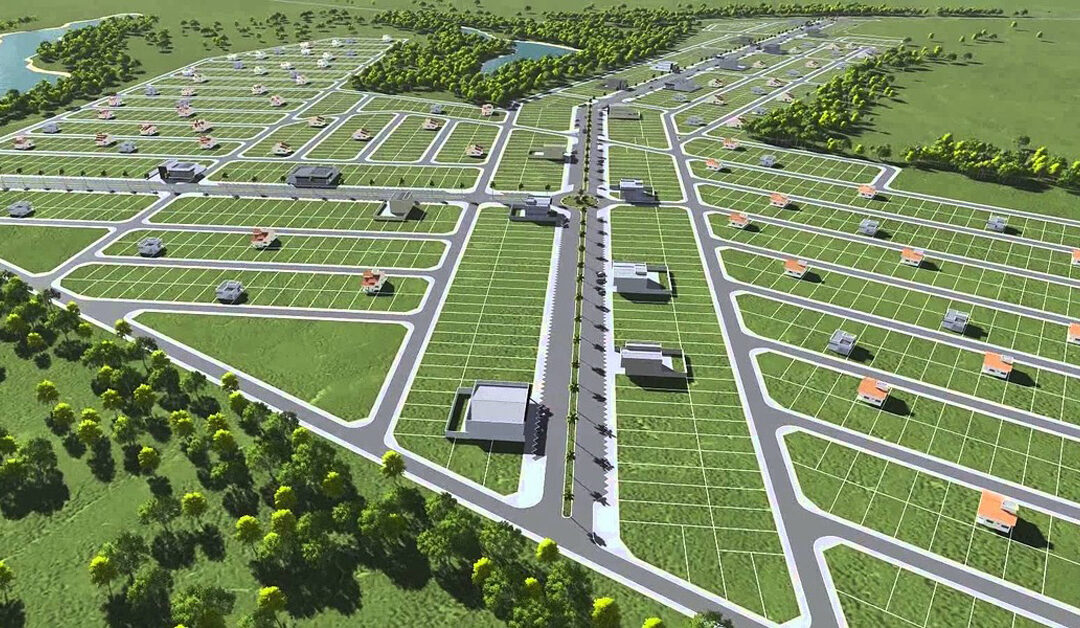One of the hallmarks of being a burgis is land ownership. In some definitions of the middle class, you need to have land title with your name on it to qualify to be part of it. (Good luck, condo owners.)
If you’re looking to purchase residential land, you would probably be looking at properties inside subdivisions. Gated subdivisions offer security and a bit more peace of mind, especially if that where you’re planning to build your home. Properties in some subdivisions also appreciate in value due to location, developments around the vicinity, or just because of the developer’s brand.
Buying a lot also has its advantages versus buying a pre-built home. You’re not exactly pressured to get construct a house. By the time you’re ready to build your home, you can customize it the way you like. You wouldn’t have to worry about maintaining a house either. It can be an investment too.
But what things should you consider when buying a subdivision lot? Here are seven things you can check.
1 – Location
Remember the first rule of real estate: Location, location, location. Where the subdivision is located and the specific lot.
City or Municipality – Are you looking for a spot in the metros or further out? Many urbanized cities and municipalities have now become saturated. As such, property prices are now quite absurd. It isn’t uncommon for residential lots in the metro even in high-density zones to go for P40,000/sqm these days. Many new developments in the greater Manila area are moving south (Cavite and Laguna) and eastwards (Rizal). Who runs the local government can also affect the quality of life. Check the section on zoning too.
Distance from the Main Road and Access Point – Trace how far the lot is from the major thoroughfare as this will determine your general mobility. You should also be aware of access points. It isn’t uncommon for subdivisions to be quite “deep” with only one access point. This can be a very important matter when it comes to emergencies. Imagine if you have to travel 5 kilometers just to get to the main road and you have a medical emergency.
Within the Subdivision – Check where the lot is located. Main roads tend to be busier and noisier. Corner lots are often bigger but you must be aware that building codes often require larger setbacks. Be wary of lots along the perimeter wall of the subdivision. Check what’s behind that wall. It’s common for some subdivisions to be surrounded by other developments, informal settlers, or even commercial and industrial facilities. What goes beyond the walls aren’t exactly the concern of the developer or the homeowners association. You’d have a difficult time dealing with any nuisance that comes from beyond the wall.
History of Floods and Distance from Fault Lines – Some locations are prone to flooding. Ask the neighbors and corroborate with news reports if the area had been flooded in the past. Check the Philvocs FaultFinder to see how close the property is to fault lines. You wouldn’t want a lot that sits too close or on top of one.
2 – Zoning and Restrictions
Check how the general area of the development is zoned. Preferably, you get a lot in low to medium-density residential areas. You can check the LGU’s zoning maps for these.
We generally have poor zoning and urban planning in the Philippines. So, it isn’t uncommon to find developments in rather weird places. You wouldn’t want to be inside the only residential area within an industrial zone. You wouldn’t want to contend with noise, heavy traffic, and pollution.
Some developers (and homeowners associations) can impose restrictions on the style and types of structures you can build. For example, some can be very strict about established setbacks (or the distance between the house walls and the perimeter fence or property line. They do make sense since they make the community look less crowded and they are safety measures in the events of fire. But that can also mean that you’d have less of a buildable space.

3 – Lot Size and Shape
Check if the actual location of the lot corresponds with the title. A prudent (but pricey) approach is to get a geodetic survey where an engineer or surveyor will check the lot if it corresponds to the boundaries stated in the title.
A lot’s size and shape will dictate what kind of home you’d be able to build on the land. A 200 sqm lot will give you enough space for a 3 to 4-bedroom two-storey home and a two-car garage. A 300 sqm lot will give you a similar living space with with ample yard room for a small lawn.
Ideally, you’d want a lot that has ample frontage. This would give you plenty of flexibility and you can always showcase your house’s facade. A narrow frontage would be quite constraining especially if you want a decent-sized garage.
Also, mind the slope and the elevation. If the lot is below or above street level, keep in mind that you may have to undertake some literal ground work fill in portions or build ramps once you’re constructing your home.
Check for any encroachments and obstructions. Trees in the middle of the lot can be bothersome since you have to file permits at the DENR to chop it down should you need to. Some developers and utility providers can “misplace” poles and cabinets within the property line. Avoid getting such lots as it will cost you a lot of time and effort to have these relocated. See if any of the drainage system encroaches the property line.
Another good practice is to have the lot’s soil tested to see if it is stable enough for construction.
4 – Infrastructure
Check the existing infrastructure if the essentials are available to make the subdivision actually livable.
- Roads – Check if there are paved roads to and within the subdivision. Some remote developments have poor roads going to them. Check the quality of the paved roads. Are they concrete or asphalt? How long has it been since the roads were built. Are there potholes? Are they wide enough to be two-way streets?
- Sidewalks – Sidewalks make the community walkable. Some developers “forget” developing sidewalks, leading home. Parking has become a touchy issue inside subdivisions since many homeowners don’t use their garages and just park on the roads instead. Narrow roads and lack of sidewalks make some subdivisions unwalkable.
- Drainage – Drainage is crucial to prevent water accumulation and flooding during heavy rains. Check if they are of the right size. Some builders take shortcuts by and not interconnecting pipes, culverts, and outfalls.
- Electrical Posts and Streetlights – A lot actually rides on the presence of electrical poles. See if there’s a post every 30 meters. Other utilities like wired broadband and cable, often rely on poles to connect their facilities too. You wouldn’t want to be the one to pay for putting up posts and laying electrical wires to your property. Streetlights are also crucial for safety.
- Perimeter Fences – Are they tall enough to keep people out? Low fences are a security issue.
- Facilities and Amenities – Check if the subdivision provides amenities like sports and recreation facilities.
5 – Developer
Developers are a major factor if the lot you plan to buy will appreciate in value or if the subdivision will become a decent place to live in. As with most things, don’t get swayed by how popular or established a real estate developer is. Try to dig deep to find out what owners and residents of their developments really think of them. Check court cases and filings if the developer has been involved in issues before. Developers have been found to abandon certain developments, change the plans from
A top tip when buying straight from the developer (like during the preselling or initial sales period) is to document everything. Gather and keep all brochures and advertising paraphernalia. Record all sales pitches and promises from agents. Take pictures of plans, mockups, models, dioramas, posters, and promotional materials. Some developers don’t live up to their promises. By having documentation of their claims can help you build a case against them if they fall short of their promises. There have been cases won by homeowners against developers stemming from the developer’s shortcomings.

6 – Homeowners Association
A homeowners association or HOA is the entity tasked to manage the subdivision once it has achieved a certain level of occupancies and/or has been turned over by the developer. There’s a law providing for the existence, powers, and duties of a homeowners association (RA 9904) and there’s also a regulating entity in the form of the Department of Human Settlements and Urban Development (DHSUD).
HOAs can both be a blessing and a bane. Well-run HOAs ensure that the subdivision gets its upkeep and maintenance. Bad HOAs can let the community go to the dogs.
Even if you’re just buying a lot, it’s good to get a read on what kind of HOA the subdivision has. Good homeowners associations can keep your lot secure by monitoring any unauthorized use. They can also maintain it through grass cutting and preventing unruly neighbors from using it for their own.
Know how much the association dues are, what they are for, and what rights you have as a member. Another top-tip, hotly contested HOA elections often mean there are strong opinions on how the HOA is being run.
7 – Legitimacy
Only buy lots from legitimate entities. If from a developer, make sure that all they have all the documents in place. The developer should have the proper registrations and licenses, and they should have a license to sell specifically for the project or subdivision where the lot is located. If from a broker, make sure you check the broker’s license and credentials.
If the seller is the owner, perform your due diligence to ensure that everything is legitimate and that the owner can legally sell you the property.
Beware of any liens, encumbrances, and arrears that may be associated with the property. You can check with the Registry of Deeds (RD) about the validity of the land title by requesting for a certified true copy. You can also check the local government’s tax department to check the tax declaration if the details match and if the real property taxes are up to date.
Make sure that you aren’t getting fleeced with the price. You can always ask around how much lots cost within that particular subdivision. You can check online on the prevailing rates.
One common issue for buyers that can surprise them is if the owner owes the homeowner’s association lot or membership dues. Some HOAs will charge vacant lots dues for security and grass cutting. Some lot owners fail to settle their dues prior to selling. You might be surprised how much you’ll be owing the HOA in case you buy a lot with arrears.
Owning a Subdivision Lot
Buying a lot in a subdivision in the Philippines can be a smart investment for those looking to build their own home. Subdivision lots also typically hold and appreciate in value.
However, before making a purchase, it is important to consider all of the factors involved. Take into account the location, size, and shape of the lot, as well as the availability of utilities and infrastructure. Verify the authenticity of the land title, check the reputation of the developer or builder, and determine if there is a homeowners association in the subdivision.
These are all important factors to consider since they will impact the property’s value or your quality of life should you decide to build your home there. By performing your due diligence, you can make an informed decision and find the perfect lot in a subdivision that meets your needs and fits your budget.

